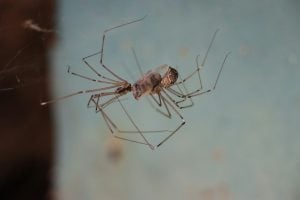Overview of Joro Spiders’ Invasion
Joro spiders, an invasive species originating from Asia, have been rapidly expanding their territory across the southeastern United States and are now making their way north.
Not as Scary as They Seem
Despite their alarming appearance - measuring up to 3 inches with legs spread and sporting vibrant colors - Joro spiders are not as dangerous as they might appear. Experts suggest that while these spiders are venomous, their bites are not harmful to humans beyond causing minor swelling and redness.
Adaptation and Spread
First appearing in Georgia around 2010, Joro spiders have shown a remarkable ability to adapt to colder climates. According to a study published in Ecology and Evolution, these spiders can thrive in temperatures as low as 25 to 32 degrees Fahrenheit, similar to the conditions in northern Honshu, Japan.
David Coyle, a professor at Clemson University, predicts that Joro spiders will eventually inhabit most of the eastern US. This prediction aligns with observations of the spiders’ spread into areas like Maryland, and experts believe they could reach New Jersey and New York as soon as this summer.
Unique Characteristics and Behavior
One notable behavior of Joro spiders is their ability to “fly” using a technique called ballooning. By releasing a strand of silk, they can catch the wind and travel up to 3 miles. This method allows them to disperse over large areas efficiently.
However, Joro spiders are primarily outdoor dwellers and are unlikely to invade homes. They prefer open spaces such as parks, fields, and suburban properties, often building their distinctive golden webs in trees or near buildings’ entrances.
Impact and Public Perception
Although Joro spiders are invasive, their full impact on local ecosystems remains unclear. They are not a threat to pets and are considered to be among the “shyest” spiders ever documented. Entomologist Jonathan Larson from the University of Kentucky notes that these spiders avoid biting anything they can’t consume.
While the presence of Joro spiders might initially seem like a cause for alarm, they are relatively harmless to humans and pets. Their spread is expected to continue, but their outdoor habitat preferences mean they are unlikely to become a significant nuisance in homes.
Newer Articles
- How to Effortlessly Set Up Your Smart Home Devices with Amazon Alexa
- Elon Musk Plans Lower-Orbit Starlink Satellites to Reduce Latency
- 10 Life-Changing Benefits of Running: Why You Should Start Today


